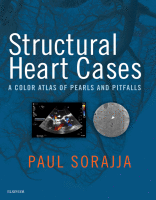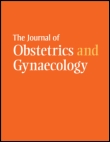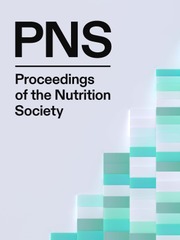Publications
Doctor Joy Shome is the co-author of 11 papers in leading Peer Reviewed Journals. He has also contributed 2 chapters to a canonical anthology of Cardiology Cases and articles to major medical publications.

Vol. 32 - 14 Jan 2025
Previous studies have shown mixed results comparing short-term mortality in patients undergoing urgent transcatheter aortic valve implantation (Urg-TAVI) compared with elective procedures (El-TAVI) for severe aortic stenosis (AS). This study aimed to explore the predictors of requirement for Urg-TAVI versus El-TAVI, as well as compare differences in short- and intermediate-term mortality.
This single-centre, retrospective cohort study investigated 358 patients over three years. Baseline demographic data were collected for patients undergoing elective and urgent procedures, and mortality outcomes at one-month, one-year and three-year follow-up were compared.
Urg-TAVI was required in 131 (36.6%) patients. Patients undergoing Urg-TAVI were significantly more likely to be female, have poor left ventricular (LV) function, with higher baseline creatinine and higher clinical frailty score (CFS). Higher rates of vascular complications were independently associated with increased mortality at one month. Mortality at one year was associated with higher creatinine level (odds ratio [OR] 1.01, 95% confidence interval [CI] 1.00 to 1.01, p=0.0013) and an urgent procedure (OR 2.25, 95%CI 1.28 to 3.97, p=0.0048). There remained a higher mortality in the urgent patients at three-year follow-up.
In conclusion, undergoing TAVI urgently did not have a statistically significant effect on 30-day mortality. However, over long-term follow-up of one year, it was associated with worse mortality than elective TAVI, and this persisted out to three years.

Vol. 222 - 1 Jul 2024
Transcatheter Aortic Valve Replacement With the Navitor System: Real-World United Kingdom Experience
The Navitor transcatheter heart valve (THV) is the latest iteration of the Portico self-expanding valve system. Early prospective studies have shown promising outcomes, however, there is a lack of complementary ‘real-world’ data. This study aimed to assess early safety and efficacy outcomes of the Navitor THV using registry data from 6 high-volume United Kingdom transcatheter aortic valve replacement (TAVR) centers. Demographic, procedural, and in-hospital outcome data were retrieved from 6 United Kingdom centers. The primary safety end point was 30-day mortality. Primary efficacy end points were procedural success, mean aortic gradient, and ≥moderate paravalvular leak. Secondary end points included rates of new permanent pacemaker implantation, stroke, and vascular injury. A total of 574 patients (mean age 83.4 years; 54.5% female) underwent Navitor TAVR between January 2020 and May 2023. The 30-day mortality in this patient cohort was 1.6%. Procedural success was 98.1%, mean echo-derived gradient post-TAVR was 7.7 ± 4.8 mm Hg (95% confidence interval [CI] 7.2 to 8.3, p <0.001) and 5.1% of patients had ≥moderate paravalvular leak (sample proportion estimate [p̂] = 0.051, 95% CI [0.035, 0.073], p <0.001). New permanent pacemaker implantation to discharge was required in 11% (p̂ = 0.119, 95% CI 0.088 to 0.158, p <0.001), stroke occurred in 1.2% of patients (p̂ = 0.017, 95% CI 0.006 to 0.036, p <0.001) and significant vascular injury in 1.6% (p̂ = 0.014, 95% CI 0.005 to 0.032, p <0.001). In conclusion, early procedural outcomes with Navitor TAVR compare favorably to new-generation THVs. Procedural success was high with a low incidence of complications.

Future Cardiology
Vol. 19(6) - 14 Jul 2023
Aim: Bifurcation-PCI is performed frequently, although without extensive evidence to back up a definitive solution for its complexity. We set out to identify factors associated with 1- and 12-month mortality after bifurcation-PCI between 2017 and 2021 in our tertiary center in Wales, UK.
Results: Of 732 bifurcation PCI cases (mean age 69; 25% female), 67% were in ACS, 42% were left main PCI and 25.3% involved two-stent strategy. 30-day and 12-month mortality were 1.9 and 8.2%, respectively. Age, diabetes, smoking and renal failure are associated with mortality after bifurcation-PCI, while the choice between provisional and 2-stent strategies did not impact mortality/TLR.
Conclusion: Awareness of ‘real-world’ outcomes of bifurcation-PCI should be used for appropriate patient selection, technique planning and procedural consent.

Vol. 12(7) - 28 Jun 2022
Background: Data to support the routine use of embolic protection devices for stroke prevention during transcatheter aortic valve replacement (TAVR) are controversial. Identifying patients at high risk for peri-procedural cerebrovascular events may facilitate effective patient selection for embolic protection devices during TAVR.
Aim: To generate a risk score model for stratifying TAVR patients according to peri-procedural cerebrovascular events risk.
Methods and results: A total of 8779 TAVR patients from 12 centers worldwide were included. Peri-procedural cerebrovascular events were defined as an ischemic stroke or a transient ischemic attack occurring ≤24 h from TAVR. The peri-procedural cerebrovascular events rate was 1.4% (n = 127), which was independently associated with 1-year mortality (hazards ratio (HR) 1.78, 95% confidence interval (CI) 1.06–2.98, p < 0.028). The TASK risk score parameters were history of stroke, use of a non-balloon expandable valve, chronic kidney disease, and peripheral vascular disease, and each parameter was assigned one point. Each one-point increment was associated with a significant increase in peri-procedural cerebrovascular events risk (OR 1.96, 95% CI 1.56–2.45, p < 0.001). The TASK score was dichotomized into very-low, low, intermediate, and high (0, 1, 2, 3–4 points, respectively). The high-risk TASK score group (OR 5.4, 95% CI 2.06–14.16, p = 0.001) was associated with a significantly higher risk of peri-procedural cerebrovascular events compared with the low TASK score group.
Conclusions: The proposed novel TASK risk score may assist in the pre-procedural risk stratification of TAVR patients for peri-procedural cerebrovascular events.

Vol. 23(6) - 28 Jun 2021
2D high resolution vs. 3D whole heart myocardial perfusion cardiovascular magnetic resonance
Aims
Developments in myocardial perfusion cardiovascular magnetic resonance (CMR) allow improvements in spatial resolution and/or myocardial coverage. Whole heart coverage may provide the most accurate assessment of myocardial ischaemic burden, while high spatial resolution is expected to improve detection of subendocardial ischaemia. The objective of this study was to compare myocardial ischaemic burden as depicted by 2D high resolution and 3D whole heart stress myocardial perfusion in patients with coronary artery disease.
Methods and results
Thirty-eight patients [age 61 ± 8 (21% female)] underwent 2D high resolution (spatial resolution 1.2 mm2) and 3D whole heart (in-plane spatial resolution 2.3 mm2) stress CMR at 3-T in randomized order. Myocardial ischaemic burden (%) was visually quantified as perfusion defect at peak stress perfusion subtracted from subendocardial myocardial scar and expressed as a percentage of the myocardium. Median myocardial ischaemic burden was significantly higher with 2D high resolution compared with 3D whole heart [16.1 (2.0–30.6) vs. 13.4 (5.2–23.2), P = 0.004]. There was excellent agreement between myocardial ischaemic burden (intraclass correlation coefficient 0.81; P < 0.0001), with mean ratio difference between 2D high resolution vs. 3D whole heart 1.28 ± 0.67 (95% limits of agreement −0.03 to 2.59). When using a 10% threshold for a dichotomous result for presence or absence of significant ischaemia, there was moderate agreement between the methods (κ = 0.58, P < 0.0001).
Conclusion
2D high resolution and 3D whole heart myocardial perfusion stress CMR are comparable for detection of ischaemia. 2D high resolution gives higher values for myocardial ischaemic burden compared with 3D whole heart, suggesting that 2D high resolution is more sensitive for detection of ischaemia.

Book Chapters - May 9, 2018
Chapters:
41. Transcatheter Valve Placement in a Mitral Ring92. A Very Difficult Case of Valve-in-Valve Therapy
Vol. 119 - 1 May 2017
Echocardiography-derived measurements of maximum left ventricular (LV) wall thickness are important for both the diagnosis and risk stratification of hypertrophic cardiomyopathy (HC). Cardiac magnetic resonance (CMR) imaging is increasingly being used in the assessment of HC; however, little is known about the relation between wall thickness measurements made by the 2 modalities. We sought to compare measurements made with echocardiography and CMR and to assess the impact of any differences on risk stratification using the current European Society of Cardiology guidelines. Maximum LV wall thickness measurements were recorded on 50 consecutive patients with HC. Sixty-nine percent of LV wall thickness measurements were recorded with echocardiography, compared with 69% from CMR (p <0.001). There was poor agreement on the location of maximum LV wall thickness; weighted-Cohen's κ 0.14 (p = 0.036) and maximum LV wall thicknesses were systematically higher with echocardiography than with CMR (mean 19.1 ± 0.4 mm vs 16.5 ± 0.3 mm, p <0.01, respectively); Bland-Altman bias 2.6 mm (95% confidence interval −9.8 to 4.6). Interobserver variability was lower for CMR (R2 0.67 echocardiography, R2 0.93 CMR). The mean difference in 5-year sudden cardiac death (SCD) risk between echocardiography and CMR was 0.49 ± 0.45% (p = 0.37). When classifying patients (low, intermediate, or high risk), 6 patients were reclassified when CMR was used instead of echocardiography to assess maximum LV wall thickness. These findings suggest that CMR measurements of maximum LV wall thickness can be cautiously used in the current European Society of Cardiology risk score calculations, although further long-term studies are needed to confirm this.

Vol. 19 - 5 Dec 2016
Background
The use of coronary MR angiography (CMRA) in patients with coronary artery disease (CAD) remains limited due to the long scan times, unpredictable and often non-diagnostic image quality secondary to respiratory motion artifacts. The purpose of this study was to evaluate CMRA with image-based respiratory navigation (iNAV CMRA) and compare it to gold standard invasive x-ray coronary angiography in patients with CAD.
Methods
Consecutive patients referred for CMR assessment were included to undergo iNAV CMRA on a 1.5 T scanner. Coronary vessel sharpness and a visual score were assigned to the coronary arteries. A diagnostic reading was performed on the iNAV CMRA data, where a lumen narrowing >50% was considered diseased. This was compared to invasive x-ray findings.
Results
Image-navigated CMRA was performed in 31 patients (77% male, 56 ± 14 years). The iNAV CMRA scan time was 7 min:21 s ± 0 min:28 s. Out of a possible 279 coronary segments, 26 segments were excluded from analysis due to stents or diameter less than 1.5 mm, resulting in a total of 253 coronary segments. Diagnostic image quality was obtained for 98% of proximal coronary segments, 94% of middle segments, and 91% of distal coronary segments. The sensitivity and specificity was 86% and 83% per patient, 80% and 92% per vessel and 73% and 95% per segment.
Conclusion
In this study, iNAV CMRA offered a very good diagnostic performance when compared against invasive x-ray angiography. Due to the short and predictable scan time it can add clinical value as a part of a comprehensive CAD assessment protocol.

Vol. 24(1) - 15 Dec 2016
Current perspectives in coronary microvascular dysfunction
The coronary arterial system consists of large epicardial coronary arteries, pre-arterioles, and arterioles, which together closely regulate CBF. Structural, functional, and extravascular abnormalities of the microcirculation lead to CMD. CMD can present with symptoms suggestive of CAD, often in the absence of significant obstructive epicardial CAD. Conventional invasive angiography does not allow direct visualization of the microcirculation. Invasive indices, such as CBF and CFR, and non-invasive imaging modalities, such as CMR and PET, can be used to quantify absolute MBF and enable a direct and accurate assessment of coronary microvascular function. CMD appears to be more prevalent in women, typically presenting with symptoms of ischemia with unobstructed coronary arteries, and has a relatively unfavorable prognosis. CMD is classified clinically depending on the presence or absence of epicardial CAD, myocardial disease, or iatrogenic causes. Although invasive intracoronary techniques can be used to detect CMD, these cannot provide insight into the mechanisms involved in its pathogenesis. Imaging modalities such as CMR and cardiac PET are becoming indispensable tools in the evaluation of suspected CMD.

Vol. 18 - 6 Jan 2016
Background
Cardiac magnetic resonance (CMR) allows the combined evaluation of myocardial perfusion status and viability in the same examination. Novel methods for high-resolution quantiative analysis of myocardial perfusion have rencently been described. High-resolution perfusion avoids spatial averaging and potentially enables a more accurate assessment of total inducible ischaemic burden. The simultaneous analysis of high-resolution late gadolinium enhancement images (LGE) allows excluding areas with overt ischaemic scar from quantitative perfusion analysis. This is potentially relevant to the estimation of the ischaemic burden, since areas of scar have can result in false-positive perfusion findings. The aim of this study was to test the feasibility of combined high-resolution assessment of perfusion and late enhancement, and to assess the potential of this novel approach to provide a more accurate estimation of the ischaemic burden in patients with coronary artery disease.
Methods
20 patients with known CAD and previous myocardial infarct referred for stress perfusion CMR due to new onset of angina were included. All patients underwent rest and adenosine stress first-pass perfusion at 3T (Philips Achieva) using a high-resolution kt turbo field echo sequence and a dual bolus approach (0.075 mmol of Gd/kg of body weight; Gadovist). LGE images were acquired 15 minutes after the rest injection of Gd. Quantiative perfusion analysis was performed using validated high-resolution deconvolution analysis. LGE analysis was performed using conventional semi-quantitative analysis (signal threshold of 5 standard deviations). Stress and rest myocardial blood flow (MBF), myocardial perfusion reserve (MPR) and total LV ischaemic burden (MPR threshold of 1.5) were calculated with an without accounting for the presence of LGE and results compared.
Results
All patients had LGE (scarred area 12.5 ± 5.7%). Before considering LGE, average stress MBF, rest MBF and MPR were 2.39 ± 0.94, 0.94 ± 0.42 and 2.83 ± 2.24, respectively. In areas of viable myocardium (LGE-), stress MBF, rest MBF and MPR were 2.82 ± 0.69,1.01 ± 0.26 (p = 0.01) and 3.25 ± 0.58, respectively. In areas of scar (LGE+), stress MBF, rest MBF and MPR were 1.02 ± 0.57,0.99 ± 0.74(p = ns) and 1.04 ± 0.63 (p = 0.001 vs LGE-), respectively. The overall ischaemic burden (at a MPR threshold of 1.5) was 21.3 ± 12.5%. When excluding areas with LGE, the ischaemic burden was 13.4 ± 6.7%(p = 0.001).
Conclusions
This study demonstrates the feasibility of combined high-resolution assessment of quantitative perfusion and late enhancement. Areas of scar did not show any hyperhaemic flow during adenosine stress (MPR of approximately 1). When a threshold of 1.5 is used to define the ischaemic burden, these areas would incorrectly be ascribed to areas of inducible ischaemia if correction for the presence of LGE is not used. Combined high-resolution assessment of quantitative perfusion and late enhancement has the potential to provide more accurate assessment of myocardial perfusion status.

Article - 14 May 2015
Treating coronary chronic total occlusions
Significant advances in chronic total occlusion treatment have led to technical success rates approaching 90% with an overall complication rate that is no higher than conventional PCI

Letters to the Editor - 4 Jun 2012
Simple treatment options exist for supraventricular tachycardia in pregnancy

Vol 105(9) - 7 Jun 2012
Oxygen use for chest pain in coronary care units across the UK
Aim: To quantify the adherence to national guidance for the use of oxygen in patients presenting with chest pain to coronary care units (CCUs) across the UK.
Design: Prospective survey.
Methods: A total of 307 hospitals were contacted by telephone between August 2010 and October 2010. Of these, 48 had no CCUs, 10 units refused to take part and 18 hospitals were contacted on 2 occasions but were unable to provide the information due to paucity of time owing to heavy clinical workload. Overall 231 hospitals participated in the audit questionnaire.
Results: A total of 30% of the units used oxygen titrated to saturations in accordance with national guidelines. There was no difference between units that had on-site availability of percutaneous coronary intervention and those that did not. Those hospitals where there was a policy for routine oxygen prescription were as unlikely to comply with the guidelines on oxygen use as hospitals where oxygen was not routinely prescribed.
Conclusion: Only one-third of CCUs in the UK reported adherence to guidelines with regards to oxygen delivery in patients presenting with chest pain. Despite this figure seeming rather low, this is consistent with practice through a range of specialties and guidelines. The evidence base for the oxygen guidance remains insecure. Additional research is required but in the meantime we recommend oxygen is prescribed according to current guidelines.

Vol. 36(2) - 21 Jan 2011
Single Site Left Ventricular Pacing induced Dyssynchrony and Cardiomyopathy
Single site left ventricular (LV) pacing in the absence of intrinsic ventricular activity can be as detrimental to LV function as right ventricular apical pacing. This report describes a patient with complete heart block who developed significant dyssynchrony and cardiomyopathy secondary to single site lateral LV pacing. The process was reversed by placement of a second anterior LV lead.

Vol. 67 (OCE3) - May 2008
Direct percutaneous endoscopic jejunostomy for jejunal feeding
Aim: The aim was to review our experience of direct percutaneous endoscopic jejunostomy (DPEJ) tube placement at Aintree Centre for Gastroenterology, University Hospital Aintree, Liverpool (UHA).
Conclusion: DPEJ can be performed with high success rates and a low rate of complications. This confirms its place as an alternative means of long-term enteral nutrition in patients for whom PEG is contraindicated or impossible. Complication rates were similar to those described in other series and the re-intervention rate was lower than commonly reported for PEG jejunal extensions.
